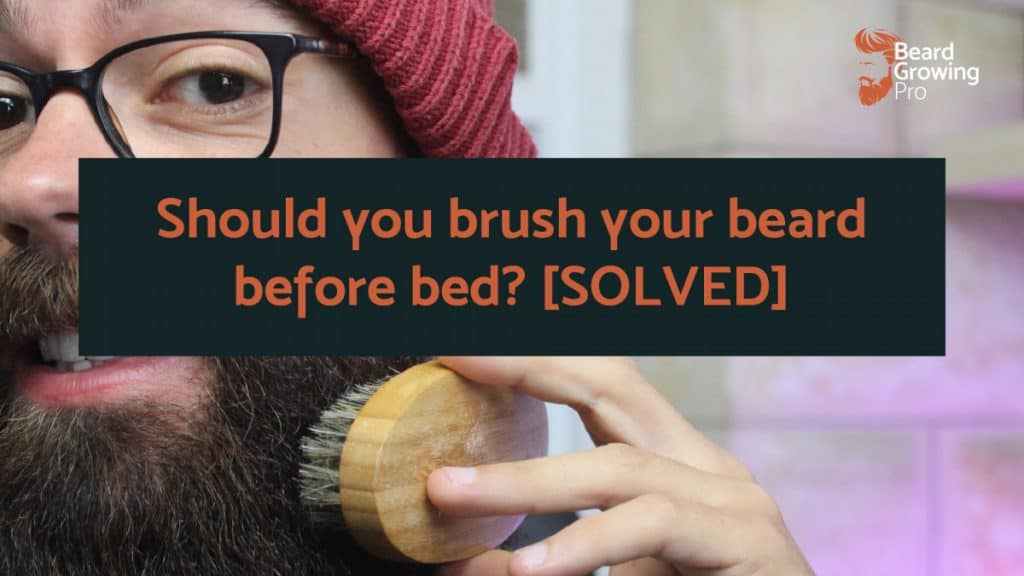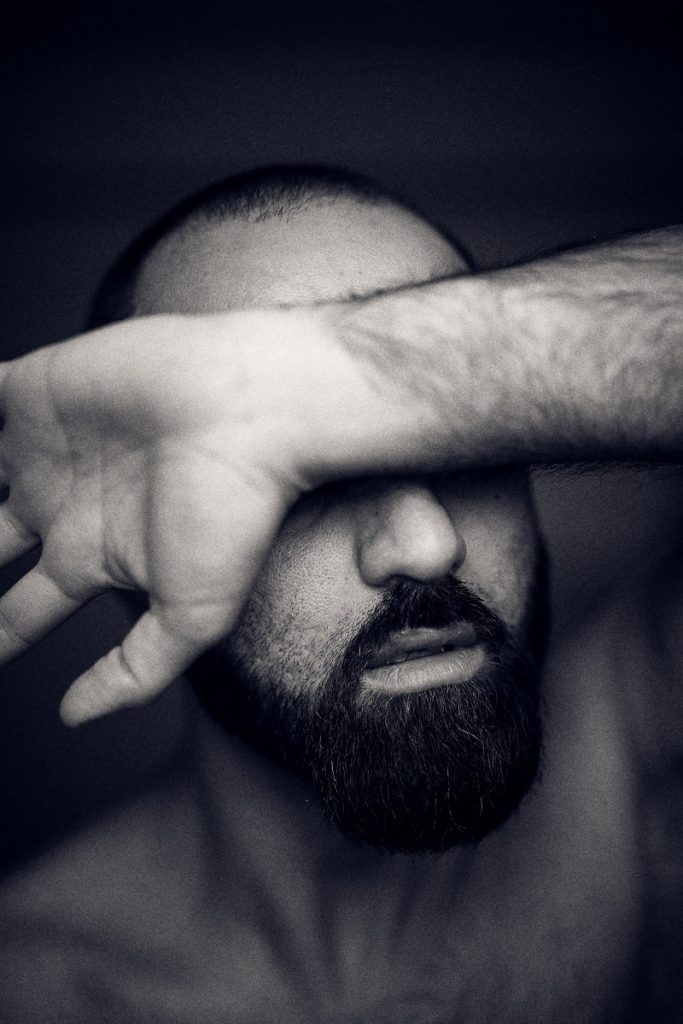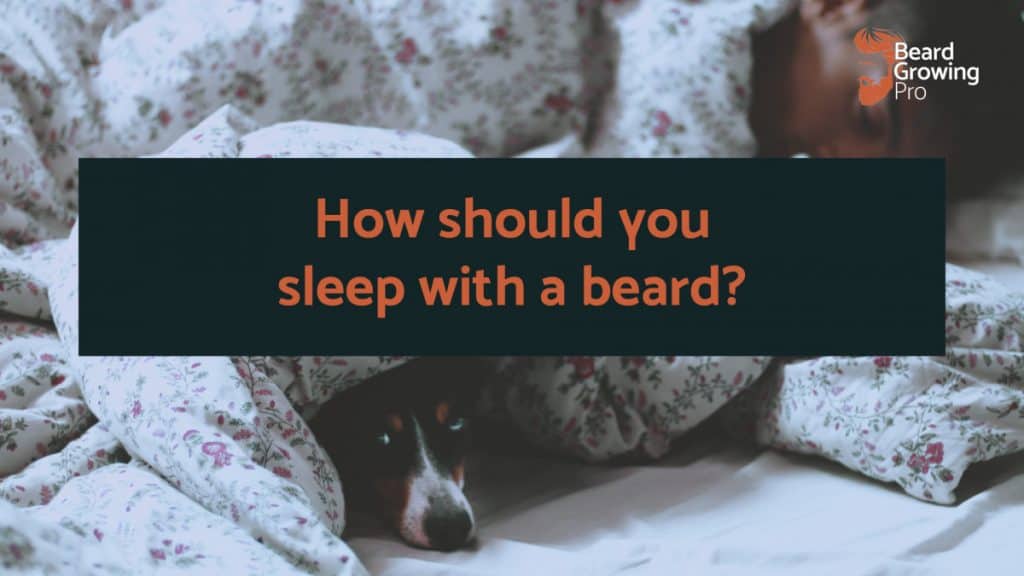On average, humans spend approximately 26 years of their lives sleeping. According to the National Centre on sleep disorders research, this translates into about one third of a person’s total lifetime. It is therefore very important to make sure that your beard is protected during the one third of your life where you are not actively caring for it. It can be very easy to smash your beard into the pillow and twist and turn causing breakages and strain on your beard.
Sleeping with a beard involves trying to stay on your back for as long as possible, keeping it dry as wet hair is more fragile, using a soft and low friction pillow, using a beard wrap, and creating a nice sleeping environment so that you don’t toss and turn on your beard all night.
I think that my experience has shown me that keeping your bedtime routine simple is one of the most effective ways of ensuring that your beard is protected throughout the night.
Trying to complicated with Beard oils, strengthening agents, or other products can introduce weaknesses into the beard. Although, if you do want to use beard products on your beard before going to bed there are a few tricks for doing it safely.
Now, let’s take a look at all of the things you can do for keeping your beard safe at night.
1. Sleep on your back
If you are already a back sleeper, your beard is going to be protected the best. Simply having your beard away from the pillow throughout the entire night is going to be one of the best ways to protect your beard and keep it strong and split ends free.

Some people find back sleeping to be rather uncomfortable. I know that my favourite position is to smash my face into the pillow and sleep on my stomach.
Sleeping positions are generally a matter of personal preference but they can also be changed by adjusting the type of mattress and pillow you own.
If you have an old mattress and pillow it may contribute to discomfort while you are sleeping on your back. If your pillows are older unsupportive there’s a good chance that your neck is not in alignment with your spine when you’re laying on your back. Both the mattress and the pillow can cause you to roll onto your front.
If you are committed to protecting your beard there are a number of ways that you can train yourself to sleep on your back:
- Place a pillow under your knees – places supportive pillow under your knees before bed your knee should slightly be bent and feel comfortable.
- Place a pillow under your lower back – some people find that sleeping on the back causes discomfort in the lower back area. Choose a thin pillow and it will alleviate the issues.
- You create a pillow fort – if you are a relatively active sleeper and are worried about rolling from your back you can create a fought completely around you full of pillows. Try placing pillows around your midsection and hips. These pillows can help prevent you from rolling over during the night.
If you are dead set on sleeping on your back just a word of warning: it could introduce some chronic snoring and research has shown that sleeping on your back actually increases the amount people snore.
2. Keep it dry
Many people shower at night. And there’s nothing wrong with getting squeaky clean before jumping into bed.The issue is that your night time shower may cause your beard to become more vulnerable to breakage.
In general hair is incredibly strong. On average a single strand of hair can carry up to 100 g of weight. You can even test this by doing your own experiment outlined in this scientific American article. Hair is strong because it has a three-layered structure. There are keratin fibres that make up the middle layer of the hair strand which is the same stuff that your fingernails are made of.
Although beard hair is incredibly strong there is an important exception to this rule – when you’re hair is wet.
Wet hair is far weaker than dry hair, which makes it more susceptible to being broken than just about anything else you can do with it. Pulling on the hair strands are more likely to damage wet hair than dry hair.
Hair is comprised of protein created in the hair follicle. In the middle of the hair are proteins called keratin and they are covered in cuticles which is like a protective covering for the middle of the hair. When hair is wet it absorbs the water and swells. This interrupts the bonds in the hair making it easier to damage.
As the hair is stretched (through movements of your face on your pillow) the stretching deforms the outer protective layer causing the cuticle edges to lift up and break stop once it’s cuticle armour is damaged it can make the beard feel rough and more wiry.
This means you should take extra care of your hair when it is wet.
3. Slippery pillow
When you are smashing your face against the pillow at night your beard gets caught up between the pillow and your face. This can cause an incredible amount of friction and your hairs can become caught in the middle.
I recommend that you consider getting a pillowcase which is made of silk or satin.
The low friction will mean that your hair flows freely over the top of the pillow and is much less likely to become twisted and kinked during your movements at night.
If you do not want to purchase a dedicated silk pillowcase you can also buy the material or use a cheap silk scarf on your pillow. You will need to find out some way to keep it in position throughout the night maybe with some clips on the underside of the pillow. But it is a cheap and effective way to try out the benefits of a silk pillow without spending loads of money on one initially.
Or, you may want to try and sew your own pillowcase from cheap fabric that you can pick up in fabric stores and second-hand stores.
4. Wait for oils and butters to absorb
Generally, I do not apply oils, butters, or balms before going to bed. In general, it is much better not to put anything in your beard with a hold component (such as wax) in your beard before bed. It will just end up on your pillow.
If you are putting products into your beard before heading to bed it should only contain oils and butters that fully absorbed into the hair.
To protect your beard while you are sleeping you should make sure that you put in the oars and butters at least 40 minutes before heading to bed. This means that the product is able to completely absorb.
If you had to bed while your beard still has oils or butters on the surface of the hair it will simply transfer to the pillow and, will also make the beard slightly more prone to damage – just like wet hair.
Use that time to wind down for bed by reading a book, staying away from your electronic devices, and generally relaxing and recovering from the day.
5. Brush it out
Before heading to bed you should consider brushing it out thoroughly. If you want to know more about all the ways to look after your beard with brushing at night check out my other article – should you brush your beard before bed? [Solved] – click here to be taken to article.

Brushing your beard before bed removes the dirt and grime that has built up throughout the day and can untangle the hairs.
I use a combination of morning brushing and nighttime brushing. I always find it easier to add a habit to an existing habit so whenever I brush my teeth I also brush my beard just after.
There are an amazing set of reasons why you should be brushing your beard before bed:
- to remove dirt and grime
- to distribute products before sleeping
- to remove dead hairs
- to untangle beard hairs
- redistributes even
- tackle static
the brushing doesn’t have to take long and, as long as you have a natural bristle brush, it should only take just a few moments.
6. Hair ties for long beards
Using a hair tie on long beards will help keep the beard out of the way while you are sleeping.
If you have a particularly long beard using a hair tie can be a way to keep the beard in one position so that it lays flat against your skin at all times. I recommend that you tie the beard tie under the chin to keep all of the hair facing forward. That way if you are a side sleeper you will have flat surfaces on both sides of your face.
If you sleep on your side you may want to also consider tying your hair to the side that you do not primarily lie on.
Make sure that you tie the hair not too tight so that it is pulling at the hair roots but just tight enough so that sits snug against your face.
Get a hair band without a metal clasp so that, even if you roll on your beard at night, it will not get caught in between the hard metal clasp which some hair bands used to hold the ends of the elastic together.
7. Consider a beard wrap
Beard wraps are also called beard bandannas, beard durags, beard bonnets, beard guards, and beard rags. They are becoming increasingly popular to wear at night by bearded people all over the world. They are an excellent way to protect your beard while sleeping and they are the only dedicated beard product on this list that could actually help you protect your beard as you sleep.

Personally, I have never considered using a beard wrap but, after reading their benefits and know that my beard is a little bit longer I am certainly much more interested.
For me, I can sometimes get a little bit self-conscious even in front of the people that I love most. But, if you really want to look at your beard at night or you are a particularly heavy sleeper and you are active while you are sleeping a beard wrap will put a physical barrier between your beard and your pillow.
The internal material is typically soft like satin or silk which means that you are able to protect your beard without having to buy a separate silk pillow.
8. Create a nice sleeping environment
One of the best ways to protect your beard while you are sleeping is to create a really nice sleeping environment so that you are always well rested and you are peaceful throughout the night.
Here are my top tips for creating an amazing sleep environment so that you can protect your beard while being as rested as possible.
Low light
Keep your bedroom as free of light as possible.

With all of today’s gadgets, like in devices, and streetlights it is very hard to completely remove light from your bedroom. Even the small dot from a fire alarm can disrupt some people.
Perhaps you need to buy some blackout curtains if you are struggling to keep the light from streaming in from road lights.
Also, a 2016 study from the University of Oxford shows us that different colours of light can affect our ability to sleep. The scientists exposed mice to 3 different colours of light – violet, blue and green. It was the green light that produced rapid sleep onset between one and three minutes. Blue and violet light delayed sleep and it took between 16 and 90 minutes for people to fall asleep.
Therefore, you should consider removing any blue light sources from your bedroom including televisions, smart devices, or other bedside alarm clocks with blue LEDs.
Keep your bedroom cool
Most people sleep best in a slightly cool room at about 18° C with adequate ventilation. If the bedroom is too hot or too cold it can easily interfere with the quality of your sleep.
Having a fan in the corner of the room can also introduce in white noise which will help train out any distracting sounds while you are dozing off.
Exercise during the day
If you exercise during the day it will help you fall asleep quicker and have a more restful night. Regular exercise improves the symptoms of insomnia and sleep apnoea and it also increases the amount of time you spend in deep sleep.
Exercise speeds up your metabolism, increases body temperature, and stimulates hormones. If you are going to exercise close to bedtime make sure that you do not exercise at least three hours before bedtime or try a relaxing, low impact exercise routines such as yoga. This can even promote deep sleep.
No tech before bed
for me, one of the best ways that I can ensure that I am ready for bed is to refrain from using any tech before bed. About one hour before I am ready to go to bed I unplug my smart phone and tuck it away. I only read books and I do not watch TV.
I hate to say it but it really works.
It also helps to start my bedtime routine – when my body starts to prepare for going to sleep. And it also helps me clear my head. My phone is a constant source of information, news, and distracting information which my mind can’t help but process. Completely removing yourself from these noisy distractions can help you get a much better night’s sleep.
Summary
In this article, we have gone over everything you need to do to protect your beard while you are sleeping. Ultimately, keeping your beard dry and sleeping on your back will be the number one way for you to keep your beard safe while you are sleeping.
If you cannot sleep on your back and your beard is long enough the next best way is to tie your beard in front of you so that you can sleep on your side is without crunching up the hair between your cheek and the pillows. Consider buying a satin or silk pillowcase or investing in a beard wrap if you are noticing a lot of breakage and hair fall in the mornings.
Getting to sleep peacefully and easily relies on you creating a nice bedtime routine which can include brushing your beard, staying away from technology at least one hour before bed, creating a nice environment which is cool, quiet and free of light. These things will ensure that not only is your beard is looked after as it can be but also that you are protecting your health which ultimately ends up with a much better looking beard in the long run.
I wish you a peaceful night’s sleep and that you wake up with minimal beard bed hair!



